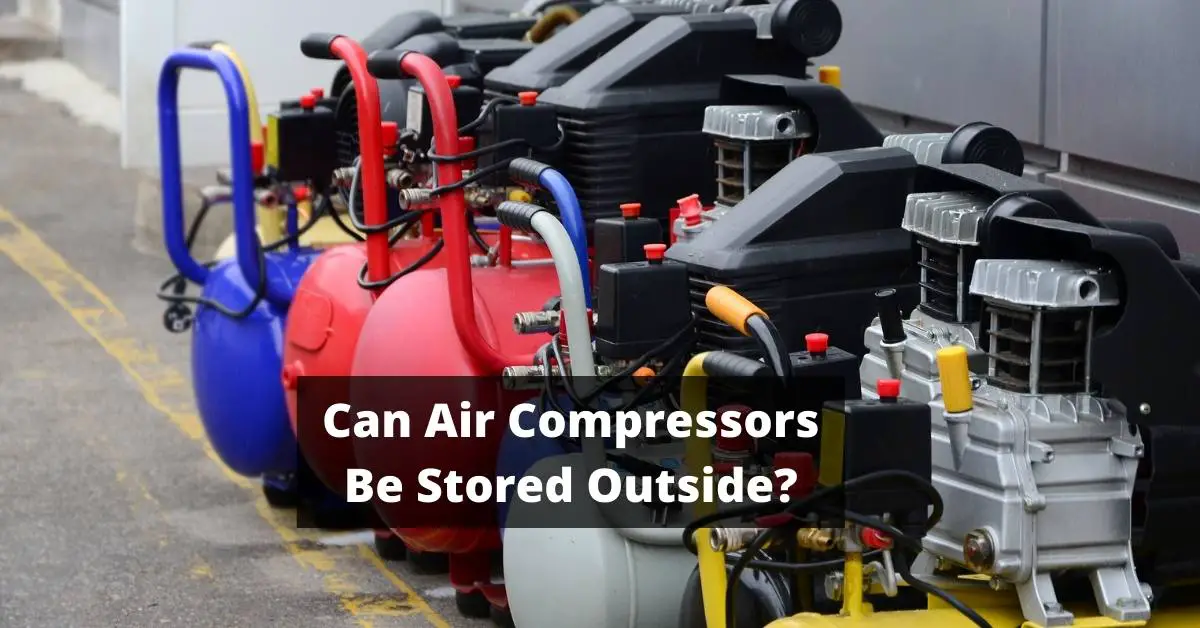As a handyman, I know how important it is to have the right tools for every job. One of the most useful tools in my workshop is an air compressor. Whether I’m using it to inflate tires or powering pneumatic tools, my air compressor makes many tasks much easier and faster.
However, something that’s often overlooked when purchasing an air compressor is its electrical requirements. Specifically, how many amps does it draw?
Understanding how many amps your air compressor draws is essential for ensuring you don’t overload your electrical circuit or cause damage to your equipment. In this article, I’ll cover different types of air compressors and their typical amp draw, how to calculate amps drawn by an air compressor, as well as tips for reducing the amps drawn by your machine.
By the end of this article, you’ll have all the information you need to make sure your air compressor runs smoothly and efficiently without any unexpected surprises.
Importance of Understanding Amps Drawn by an Air Compressor
You’ll want to grasp the significance of understanding how much power your compressor requires to run smoothly. This knowledge is crucial in ensuring that you don’t overload your electrical system or damage your air compressor.
The amount of amps drawn by an air compressor depends on various factors, including its size, motor efficiency, and intended use. If you’re using a small air compressor for household tasks, it may draw anywhere from 3-10 amps. However, larger industrial compressors can draw up to 50 or more amps.
Knowing the exact amperage rating of your air compressor can help you select the right extension cords and circuit breakers for safe operation. Moreover, understanding the amps drawn by an air compressor can help you troubleshoot any issues that may arise during operation.
If your compressor keeps tripping the circuit breaker or causing lights to flicker when turned on, it’s likely drawing too many amps. By identifying this problem early on, you can prevent costly repairs down the road.
Understanding the importance of knowing how many amps an air compressor draws is just one aspect of maintaining a safe and efficient workplace or home workshop. In the next section, we’ll explore different types of air compressors and their corresponding amp requirements, giving you a better idea of which model suits your needs best.
Types of Air Compressors and Their Amps Drawn
Air compressors come in various types, each with different levels of electrical consumption. Some common types include reciprocating, rotary screw, and centrifugal air compressors. Reciprocating air compressors are usually smaller and less expensive than other types, but they also tend to draw more amps.
Rotary screw air compressors are often used for industrial applications and can have a lower amp draw compared to reciprocating models. Centrifugal air compressors are the most energy-efficient type but also the most expensive.
When choosing an air compressor, it’s important to consider its intended use and the available power supply. A higher amp draw may require a larger circuit breaker or specific wiring requirements. It’s also important to note that the amp draw can vary depending on factors such as motor horsepower, tank size, and pressure requirements.
In order to properly determine the amps drawn by an air compressor, it’s necessary to calculate the wattage required for operation. This involves multiplying voltage by amperage to obtain watts. From there, one can determine how many amps will be drawn based on the wattage requirement of the specific model being used.
How to Calculate Amps Drawn by an Air Compressor
Calculating the electrical consumption of an air compressor can be accomplished by determining the product of voltage and amperage. This will result in a wattage measurement that can then be utilized to determine the current being drawn.
To get started, you’ll need to know the voltage rating of your air compressor, as well as its amperage rating. Once you have these two pieces of information, simply multiply them together to find the wattage.
For example, if your air compressor is rated at 120 volts and draws 15 amps when it’s running, you would multiply 120 volts by 15 amps to get a total wattage consumption of 1800 watts.
From there, you can use this figure to calculate how many amps are being drawn by dividing the wattage by your voltage rating (in this case, 120 volts). So in this example, we would divide 1800 watts by 120 volts to get a total amp draw of 15 amps.
It’s important to note that different types and sizes of air compressors will draw different amounts of power. For instance, smaller compressors may only draw a few amps while larger ones may require up to 20 or more amps.
By understanding how to calculate amp draw for your specific compressor model and size, you can better understand how much power it requires and ensure that it’s operating safely and efficiently. Examples of amps drawn by different sizes of air compressors will be discussed in the next section.
Examples of Amps Drawn by Different Sizes of Air Compressors
If you’re curious about the amount of power required to run air compressors of different sizes, this section provides examples of the electrical current needed for various models.
For a small portable air compressor that operates at 120 volts and delivers up to 150 PSI, the amps drawn range from 10-15 amps. This size is perfect for home use, inflating tires, and powering small tools.
For a larger-sized air compressor that operates on 240 volts and delivers up to 175 PSI, the amperage ranges from 20-30 amps. This size is ideal for heavy-duty construction work or painting an entire car with ease. The higher voltage results in more power output with lesser energy consumption.
Lastly, industrial-grade air compressors require even more electricity compared to smaller ones. These large machines operate on three-phase power with amperage ranging from 40-100 amps depending on their capacity and functions. They are used in factories or manufacturing plants where high-pressure continuous compressed air supply is vital.
To check the amps drawn by your air compressor, it’s important to have a reliable amp meter that can measure accurately. By checking the amperage, you can ensure if your unit is working efficiently without any overload or short-circuit issues.
How to Check the Amps Drawn by Your Air Compressor
Measuring the electrical current of your air compressor is crucial to ensure optimal performance, and with the right amp meter, you can easily check if it’s running smoothly or facing potential issues.
To begin, locate the power cord of your air compressor and plug it into a socket that can handle its voltage requirements. Once plugged in, turn on your air compressor and let it run for a few seconds to stabilize.
Next, take the amp meter and clamp it around one of the power cords of your air compressor. Make sure you’re only clamping around one cord at a time as this will give you accurate results. The amp meter should display the amount of current drawn by your air compressor. For reference, most standard-sized compressors draw around 15-20 amps.
If you notice that your air compressor is drawing more amps than usual or exceeding its maximum capacity, there are several factors to consider, such as clogged filters or leaks in the system. Addressing these issues promptly can help reduce the amps drawn by your air compressor, which not only saves energy but also prolongs its lifespan.
In the next section, we’ll discuss some tips on how to minimize energy usage without compromising performance.
Tips for Reducing the Amps Drawn by Your Air Compressor
To keep your air compressor running smoothly and efficiently, here are some tips to help you minimize energy usage while maintaining optimal performance.
First, make sure that the compressor is properly sized for the job at hand. If it’s too small, it’ll have to work harder and draw more amps to produce the desired pressure. Conversely, if it’s too big for the task, you’ll be wasting energy and money on a compressor that isn’t being used to its full potential.
Secondly, always use clean air filters to ensure that your compressor doesn’t have to work harder than necessary. Dirty filters restrict airflow and cause your machine to run less efficiently. Replacing these filters regularly can save you up to 15% in energy costs.
Lastly, check for leaks in your compressed air system as they can lead to significant energy waste. Even small leaks can add up over time, so be proactive in identifying and fixing them promptly.
By making these simple changes, you’ll not only reduce power consumption but also extend the lifespan of your equipment by reducing wear and tear caused by excessive strain.
A well-maintained air compressor is essential for all types of applications, from DIY projects at home to professional jobsites where reliability is critical for success! Follow these tips to reduce amps drawn by your air compressor through proper sizing, filter maintenance, and leak detection, and save money on electricity bills while prolonging the life of your machine.
Conclusion and Final Thoughts
As we wrap up, it’s important to remember that taking care of your air compressor is like tending to a well-oiled machine. Regular maintenance and attention lead to reliable performance and peace of mind for all your future projects. By reducing the amps drawn by your air compressor through proper maintenance, you can save on energy costs and prolong the life of your equipment.
One simple way to reduce amps drawn by your air compressor is to keep it clean and free from debris. This means regularly cleaning or replacing filters, checking for leaks in hoses or fittings, and ensuring that the compressor motor remains lubricated. Another tip is to use an extension cord with a high enough gauge rating to support the motor’s power requirements. A low gauge rating can cause voltage drop, leading to increased amp draw.
In conclusion, understanding how many amps an air compressor draws is crucial for selecting the right circuit breaker or outlet for safe operation. However, proper maintenance and attention are equally important in reducing amps drawn over time. By keeping your air compressor clean, well-lubricated, and supported by an appropriate power source, you can ensure reliable performance for years to come.
Conclusion
So, to sum it up, understanding the amps drawn by your air compressor is crucial for ensuring it’s safe and efficient operation. Different types and sizes of air compressors draw varying amounts of amps, which can impact your electricity bill and even cause damage to your electrical system if not properly monitored.
Did you know that a 10-gallon air compressor can draw up to 15 amps, while a 60-gallon one can draw up to 30 amps? That’s quite an interesting statistic, isn’t it? By knowing such figures and learning how to calculate the amps drawn by your air compressor, you can make informed decisions about using it.
In addition to calculating the amps drawn by your air compressor, it’s also important to regularly check them and take steps to reduce them where possible. This includes maintaining proper lubrication levels, cleaning or replacing filters as needed, and avoiding overuse or misuse of the equipment.
By following these tips and educating yourself on the topic at hand, you’ll be able to get the most out of your air compressor while keeping yourself and others safe.


